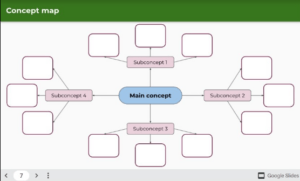It Is What It Is
, illustrated by Christopher Nielsen
Learning intention:
I am learning to identify the types of verbs so that I can sort them into their different processes.
Success criteria:
- I can identify verbs in a text.
- I can explain different verb processes.
- I can sort verbs into their different processes.
Before reading It Is What It Is, draw a T-chart on the board with YES on the left and NO on the right or download one via the Digital Learning Selector. Explain to the class that you’ve got a special rule in your mind and that you’ll be writing words that follow the rule on the left side of the board, and words that don’t follow the rule on the right. Write a doing verb on the left side (such as jump) and a non-verb on the right (such as umbrella). Continue adding words to each column one at a time while students guess what the rule is. Once a student has realised the words on the left are verbs (doing words), write the words:
- said
- yelled
- believe
- hope
in the left column. Ask students whether they still think the rule for the left column is verbs. Explain that there are different types of verbs, and they will learn more about them.
Read It Is What It Is as a class or listen to the audio recording. Ask students to find the words in the poem that show what a character is doing (doing verbs). Record students’ answers on the board in one colour. Answers: comes, hop, skip, bark*, run, wag, waiting, walk, fetch, bring, shake, beg*, whine*, sleep, stretch, yawn*, twitch, sigh*
*Will also go under saying verbs.
Ask students to find words in the poem that could show what a character is saying (saying verbs). Explain that these are words that could be used instead of said. Record students’ answers on the board in a second colour. Answers: bark, beg, whine, sigh, yawn, complain.
Ask students to find words in the poem that could show what a character is thinking (thinking verbs). Record students’ answers on the board in a third colour. Answers: thinks, care.
Explain that students will work in pairs to create a concept map of different verb processes. They can use the template on page 7 of the NSW Education Department’s slideshow on concept maps, as pictured below, using three subconcepts (doing verbs, saying verbs, thinking verbs).

Assessment as/of learning:
Instruct students to find at least five examples of each type of verb process throughout this issue of The School Magazine and place it in the correct section of their concept map. (Students may need to look up examples of thinking verbs before beginning.)
A few answers include:
Yelled (saying verb, page 4)
Tell (saying verb, page 8)
Asked (saying verb, page 14)
Shouted (saying verb, page 15)
Exclaimed (saying verb, page 16)
Demanded (saying verb, page 16)
Called (saying verb, page 17)
Remember (thinking verb, page 13)
Imagine (thinking verb, page 8)
Believe (thinking verb, pages 10, 11, 26, 29)
Guess (thinking verb, page 4)
Recognise (thinking verb, page 9)